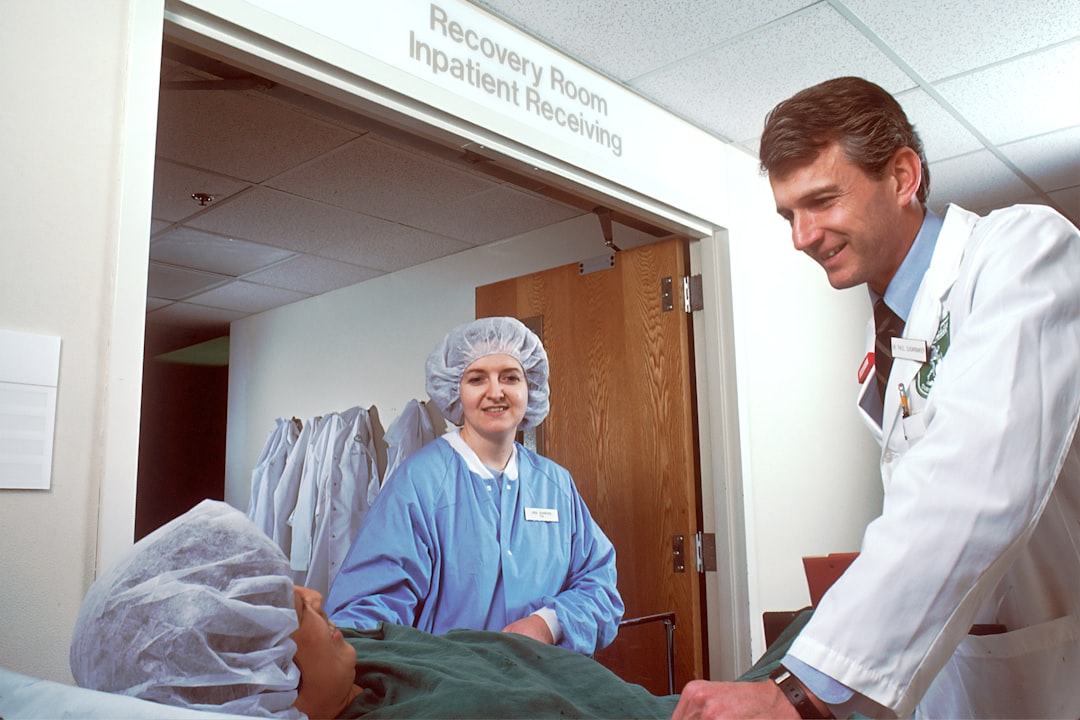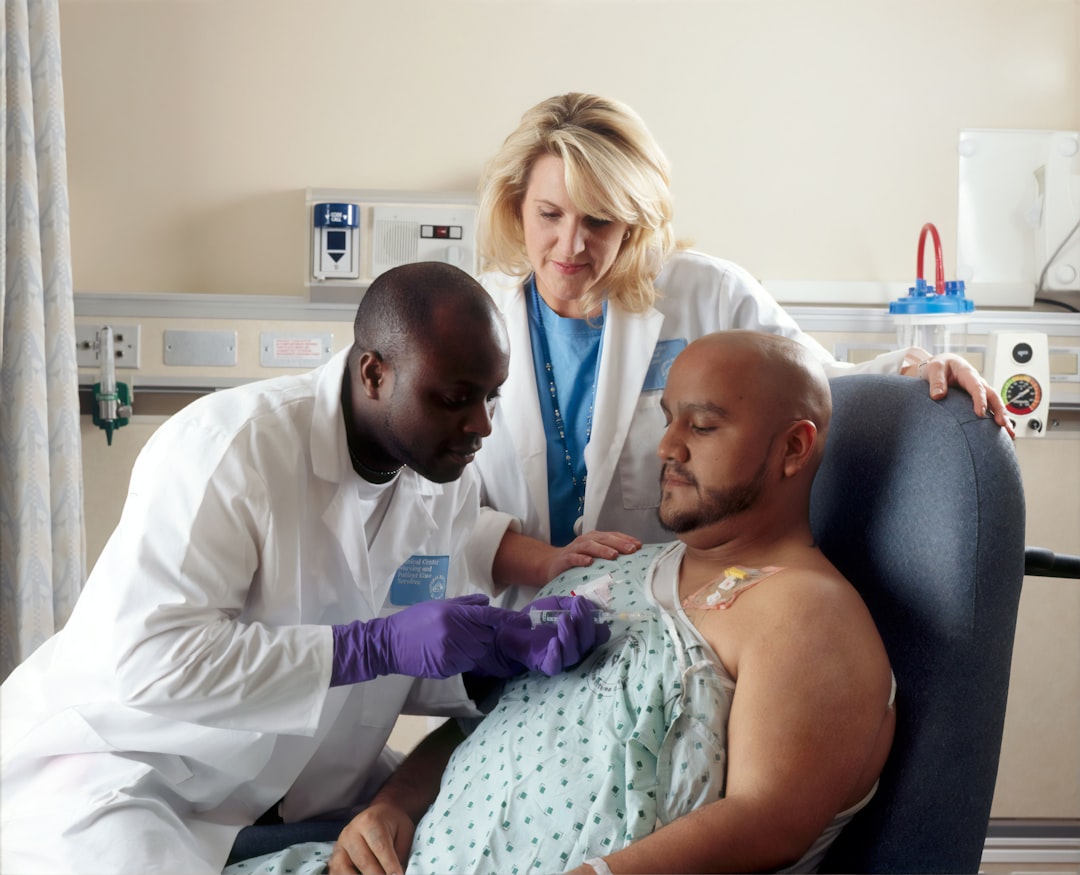

Engage prospects with a scan and streamline customer engagement with FREE QR code marketing tools by Sona – no strings attached!
Create a Free QR CodeFree consultation

No commitment

Engage prospects with a scan and streamline customer engagement with FREE QR code marketing tools by Sona – no strings attached!
Create a Free QR CodeFree consultation

No commitment
The healthcare sector is undergoing rapid transformation, with Advanced Cardiac Life Support (ACLS) certification programs at the forefront of professional skill development. As mandates and credentialing requirements tighten, healthcare professionals face growing pressure to manage ACLS certification, renewal, and verification seamlessly, often against a backdrop of shift work, diverse training settings, and administrative overload. Programs that rely on paper forms or one-size-fits-all communications struggle to keep pace with the flexibility and speed frontline clinicians expect.
One persistent challenge is collecting timely, actionable feedback on ACLS course delivery and learner experience. Legacy approaches such as paper forms, static surveys, and delayed follow-up often result in incomplete data, low response rates, or feedback that arrives too late to inform improvements. Worse, feedback from key participants can remain elusive, causing high-value insights to get lost in fragmented or manual tracking systems. Without a reliable signal at the point of experience, improvements lag and the learner voice is underrepresented.
Modern technologies now allow ACLS training centers to close this gap. QR codes, when integrated thoughtfully into both physical and digital training materials, provide a way to capture structured feedback at the point of experience during learning, simulation, or certification events. This helps programs address anonymous or untracked participant feedback and reduce opportunity loss. The result is a continuous improvement loop that meets clinicians where they are and gives administrators real-time visibility into what works, what needs attention, and how to optimize instruction and workflows across sites and cohorts.

Traditional analog feedback collection methods often struggle to capture in-the-moment insights, particularly when participants are pressed for time or move across training locations. Busy healthcare professionals may forget to submit feedback altogether, leaving program administrators with an incomplete or delayed understanding of learner needs and course effectiveness. Paper forms, shared tablets, or emailed links distributed days later rarely compete with the realities of shift changes and clinical demands.
By embedding strategically placed QR codes at course exits, within presentation materials, or directly on certificates and badges, ACLS programs can prompt immediate, device-friendly feedback as participants conclude their learning activities. Scanners land on mobile-first surveys like Google Forms QR codes that can be completed in under 2 minutes, and responses flow instantly into dashboards for instructors and coordinators. This approach minimizes the need for manual data entry while ensuring that even high-value participants who might otherwise be missed are given a fast, secure way to share their perspectives.
Key steps include:
For example, trainers display a unique QR code at the end of class and attach the same code to digital credentials. Participants scan and complete a mobile-friendly survey before leaving the room. Responses populate a dashboard in real time, enriching data quality, reducing delay, and preventing feedback loss. Over time, administrators compare sessions, identify outlier trends by instructor or venue, and adjust curricula or pedagogy with evidence rather than guesswork.

ACLS certification programs increasingly grapple with fragmented feedback loops, incomplete participant data, and limited visibility into which training touchpoints actually drive satisfaction or regulatory compliance. These challenges can lead to overlooked improvement opportunities, low repeat engagement, or blind spots in credentialing workflows. The most actionable feedback often comes immediately after a hands-on scenario or skills check, yet that is precisely when legacy tools underperform.
QR codes offer several specific advantages:
Consider common materials such as appointment cards, classroom signage, lanyard badges, and certificates. Each becomes a capture point for feedback, a starting point for renewal scheduling, or a doorway to verification. In practice, QR codes transform static content into measurable engagement, helping ACLS programs tie specific materials and moments to learning outcomes and compliance needs.

Static, generic touchpoints can lead to missed opportunities for targeted engagement. When QR codes are customized for specific scenarios, they help address the difficulty of tracking participant actions across different channels or updating survey content as program needs evolve. The right format should mirror the action you want learners or employers to take and the data you need to capture.
Useful QR code formats for ACLS programs include:
Dynamic QR codes allow administrators to update links post-printing, append UTM parameters, and segment scan data by class, instructor, or facility. Static codes still have a place for evergreen resources, but dynamic codes are preferred when you need editability, analytics, and integration with CRM or LMS platforms.

Targeting feedback and engagement in high-impact moments is crucial, yet often missed when programs lack visibility into participant journeys or struggle to unify data. QR code placements should coincide with peak intent, minimal friction, and clear calls to action. Proper placement multiplies the value of each learning artifact and makes it simple for clinicians to act while the experience is fresh.
Growth-oriented QR code placements include:
Analyze placement performance in a central dashboard to identify the high-yield touchpoints that drive the most scans and the highest quality feedback. Over time, you will see patterns by facility, time of day, or instructor, which informs both operational decisions and targeted outreach to cohorts that need additional support.

Fragmented participant touchpoints and outdated credentialing processes can stifle feedback collection, particularly when workflows depend on manual consolidation. QR codes integrate seamlessly into an ACLS program’s end-to-end lifecycle, from pre-course preparation to certification verification and renewal management.
Integrated QR code use cases include:
A unified QR workflow streamlines compliance, speeds verification, and eliminates confusion from fragmented data sources. When feedback, verification, and renewal all route through consistent QR entry points, administrators gain a single pane of glass for oversight, learners get faster service, and employers benefit from reliable and timely credential checks.
Missed follow-up with graduates or failure to segment by account, activity, or role leads to generic outreach and missed opportunities. Every QR scan creates a behavioral signal: what someone scanned, where they scanned it, and when they engaged. With the right structure, ACLS programs can transform these signals into high-value audiences that fuel timely and relevant communications. For tactical guidance on activating these segments, see Sona’s Playbook intent-driven retargeting.
Modern QR-enabled campaigns can:
Syncing scan data to CRM profiles enables retargeting workflows without losing leads due to anonymity or fragmentation. For example, a traveling nurse scans a badge QR to verify certification at a new facility, then opts into renewal reminders tied to their home region. Meanwhile, a hospital educator scans a classroom poster after observing low megacode scores and receives a targeted toolkit for remediation. Each interaction becomes context-rich fuel for more effective outreach.
Managing engagement across physical and digital touchpoints is difficult when data remains isolated. This weakens analytics and leads to inconsistent engagement. QR codes function as connectors that link every printed or in-person moment to a digital action, bringing real-time measurement and automated follow-up to channels that previously were hard to quantify.
Embedding QR codes across channels integrates every participant touchpoint:
A centralized QR platform unifies scan analytics and touchpoint data in CRM or LMS profiles, supporting cohesive insights and outcome tracking. Over time, this makes your entire multi-channel program smarter: you learn which placements move the needle, which audiences respond, and where to invest for maximum impact.
QR campaigns work best when they are designed with clear outcomes, tested in real environments, and instrumented for data. Use the following steps to move from idea to measurable impact and to ensure your QR touchpoints serve both learners and administrators effectively.
The goal is to create a consistent end-to-end experience: learners know exactly what happens when they scan, instructors know which codes to display and when, and administrators can track performance from the first scan to the downstream action.
Clarify the specific action you want to drive, such as feedback collection, instant verification, or renewal scheduling. Tie this action to a measurable pain point like low response rates, verification delays, or missed renewals so you can evaluate impact reliably.
Choose static for fixed resources and dynamic for trackable, editable campaigns. Most feedback and renewal workflows benefit from dynamic codes that support real-time updates, tags, and integrations with your CRM or LMS.
Incorporate your logo, a short call to action, and an instruction line that explains the benefit of scanning. Test codes in real training spaces with realistic lighting, distances, and angles to ensure reliable scannability from the back of a room or across a lab bench.
Roll out codes in the places with the highest likelihood of engagement: certificates, final slides, simulation stations, renewal notices, and instructor badges. If you operate across multiple sites, standardize placement patterns and messaging so learners know where to look.
Track scan volume, completion rates, and downstream actions such as renewal bookings or verification page visits. Compare engagement by location, instructor, and time of day. Consolidate data in a central dashboard to break down silos and identify improvement targets.
Employing this checklist turns every QR touchpoint into a source of actionable data for improvement. Over time, it establishes a reliable operating rhythm for continuous optimization, better learner experiences, and smoother administrative workflows.
Quality decisions depend on actionable insights, and many ACLS providers struggle to link feedback and engagement to business outcomes. The inability to attribute actions by session, channel, or participant can result in missed revenue, preventable churn in renewals, and slower cycles for curriculum improvements. See Sona’s blog post single vs multi-touch for a framework to evaluate impact across the learner journey.
Advanced tracking now allows:
With a platform like Sona QR for code generation and analytics, and Sona.com for identity resolution and multi-touch attribution, you can track every scan, measure engagement by channel, respond in real time, sync activity with your CRM, and connect scans to downstream revenue. The combination turns scans into a performance signal that drives both educational quality and program growth, closing the loop from physical engagement to measurable outcomes.
Success with QR campaigns depends on more than code placement. Without segmentation, automation, and staff enablement, even well-designed codes may underperform. Build simple habits that scale across cohorts and sites to keep momentum and measurable impact.
Key tactics include:
Example: A hospital system deploys unique QR codes on all ACLS certificates. Positive surveys trigger mobile referral prompts and optional testimonials. Negative feedback initiates a coordinator callback within 24 hours. Scan data flows to a central dashboard where administrators compare sites and instructors, identify best practices, and prioritize improvements. The result is higher satisfaction, stronger renewal pipelines, and increased referrals from champions who had a great learning experience.
ACLS certification programs are rapidly evolving toward seamless, data-informed training and credentialing models. By embedding QR codes thoughtfully throughout the certification journey, training centers prevent missed insights, avoid feedback or renewal delays, and consolidate participant data into one actionable system. Actionable feedback is captured from every touchpoint, improving learner support, compliance, and tracking.
For program leaders, embracing QR-enabled feedback loops is essential for ongoing optimization and measurable value in every course iteration. Start small with one or two high-impact placements like certificates and final slides, then expand to simulation stations, renewal notices, and classroom signage. As you standardize QR-first workflows and integrate scan data with your CRM or LMS, you will turn every interaction into a growth signal that improves both educational outcomes and program performance. Start creating QR codes for free.
QR codes have revolutionized ACLS certification programs by transforming traditional feedback collection into an efficient, data-driven process. By integrating QR codes, instructors and administrators can effortlessly gather real-time participant insights, improving course quality and enhancing learner engagement. Imagine instantly capturing detailed feedback from every attendee, enabling you to refine content and delivery with precision.
With Sona QR, you gain the power to create dynamic, trackable QR codes that can be updated on the fly—no need to reprint materials. This flexibility connects each scan directly to actionable data, helping you optimize certification experiences and demonstrate program effectiveness. Start for free with Sona QR today and turn every participant interaction into meaningful progress and lasting success.
To obtain ACLS certification, healthcare professionals must complete an accredited ACLS course that includes hands-on training and assessments, followed by certification issuance which can be verified online.
You can verify your ACLS certification online by scanning the QR code on your certificate or badge, which links to a real-time verification page showing your credential status, expiry date, and credential ID.
Accredited ACLS certification programs are offered by recognized training centers that comply with regulatory standards and often provide digital credentials with integrated QR codes for verification and feedback.
The article does not specify the exact cost of ACLS certification programs as pricing varies by provider and location.
ACLS certification must be renewed periodically before expiration, with renewal scheduling facilitated through QR codes that link to registration systems and send automated reminders as the expiry date approaches.
QR codes enable immediate feedback collection, certification verification, renewal scheduling, dynamic content updates, improved data tracking, and reduced administrative costs by digitizing traditionally manual processes.
Programs can place QR codes at course exits, on certificates, badges, and training materials to prompt participants to complete short mobile surveys instantly, with responses feeding into real-time dashboards for analysis.
Useful QR code formats include web links for surveys and resources, vCards for contact sharing, SMS or email triggers for quick requests, certification verification links, and renewal scheduling portals.
High-impact QR code placements include course completion events, training centers, digital and print handouts, renewal notices, compliance communications, and simulation labs to capture feedback and facilitate renewals.
QR codes link to pre-filled renewal registration pages allowing learners to select dates, confirm payment, and receive automated reminders, simplifying and increasing renewal rates.
Administrators should define clear outcomes, select appropriate QR code types, design and test codes with clear calls to action, deploy codes across priority channels, and monitor and optimize performance using analytics dashboards.
Tracking scans reveals when, where, and how participants engage, enriches learner profiles in CRM or LMS systems, attributes renewals and upgrades to specific touchpoints, and enables real-time content updates for improved outcomes.
Using unique codes per class or site, appending UTM parameters for tracking, automating follow-up messages based on feedback, and training instructors to actively promote scanning all increase QR campaign effectiveness.
Programs can embed QR codes in training manuals, event badges, renewal notices, digital signage, and online course modules to unify physical and digital engagement and enable real-time measurement and follow-up.
Use Sona QR's trackable codes to improve customer acquisition and engagement today.
Create Your FREE Trackable QR Code in SecondsJoin results-focused teams combining Sona Platform automation with advanced Google Ads strategies to scale lead generation

Connect your existing CRM

Free Account Enrichment

No setup fees
No commitment required

Free consultation

Get a custom Google Ads roadmap for your business






Launch campaigns that generate qualified leads in 30 days or less.
